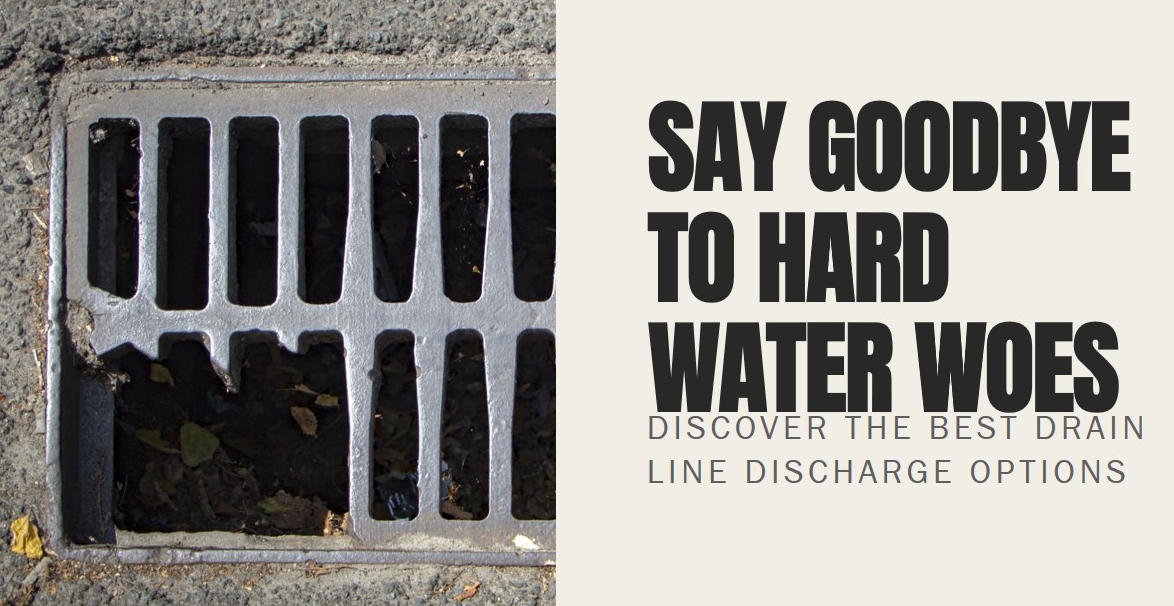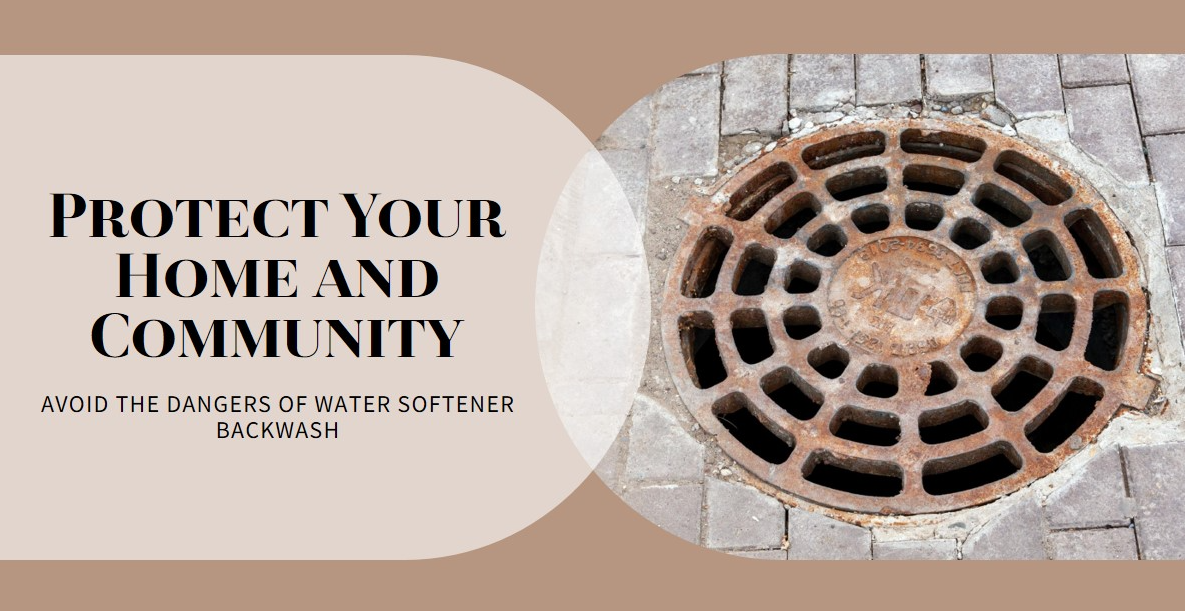A water softener is a device that removes minerals from hard water, making it softer and more pleasant to use. Hard water can cause scale buildup in pipes and appliances, and it can also make soap less effective.
When a water softener regenerates, it flushes out the minerals that have been removed from the water. This process is called backwashing. The backwash water contains salt and other minerals, and it needs to be disposed of properly.
There are several different ways to discharge water softener backwash. The best option for you will depend on your individual circumstances.
Different Types of Water Softener Drain Line Discharge Options
Here are the different types of water softener drain line discharge options:
- Direct discharge: This is the most common option. The backwash water is simply piped directly into the sewer system.
- Dry well: A dry well is a hole in the ground that is filled with gravel or rock. The backwash water is pumped into the dry well, where it is filtered and eventually evaporates.
- French drain: A French drain is a trench that is filled with gravel or rock. The backwash water is directed into the French drain, where it is filtered and eventually seeps into the ground.
- Septic tank: A septic tank is a buried tank that treats wastewater from homes. The backwash water can be pumped into the septic tank, where it will be treated along with the other wastewater.
- Subsurface drain: A subsurface drain is a pipe that is buried underground. The backwash water is directed into the subsurface drain, where it is filtered and eventually seeps into the ground.
- Sump pump: A sump pump is a pump that removes water from a sump pit. The backwash water can be pumped into the sump pit, where it will be pumped out by the sump pump.
Pros and Cons of Each Option
Here are the pros and cons of each of the different water softener drain line discharge options:
- Direct discharge:
- Pros: This is the most convenient option. It is also the least expensive option.
- Cons: This option can be harmful to the environment if the backwash water contains high levels of salt.
- Dry well:
- Pros: This option is relatively inexpensive and can be a good choice if you have a suitable location for a dry well.
- Cons: This option can be unsightly, and it may not be suitable if your soil is not permeable enough.
- French drain:
- Pros: This option is a good choice if you want to avoid discharging the backwash water into the sewer system. It is also relatively inexpensive.
- Cons: This option can be unsightly, and it may not be suitable if your soil is not permeable enough.
- Septic tank:
- Pros: This option is a good choice if you already have a septic tank. It is also relatively inexpensive.
- Cons: This option may not be suitable if your septic tank is not large enough to handle the additional water from the backwash.
- Subsurface drain:
- Pros: This option is a good choice if you want to avoid discharging the backwash water into the sewer system. It is also relatively inexpensive.
- Cons: This option may not be suitable if your soil is not permeable enough.
- Sump pump:
- Pros: This option is a good choice if you already have a sump pump. It is also relatively inexpensive.
- Cons: This option may not be suitable if your sump pump is not large enough to handle the additional water from the backwash.
Environmental Impact of Water Softener Backwash Discharge
The environmental impact of water softener backwash discharge depends on the specific option that is chosen. Direct discharge can be harmful to the environment if the backwash water contains high levels of salt. The salt can pollute waterways and harm aquatic life.
Other options, such as dry wells, French drains, and subsurface drains, can help to mitigate the environmental impact of water softener backwash discharge. These options allow the water to filter through the soil before it reaches the groundwater.
Cost-Effectiveness of Different Water Softener Drain Line Discharge Options
The cost-effectiveness of different water softener drain line discharge options will vary depending on the specific option that is chosen. Direct discharge is the least expensive option, but it can be harmful to the environment.
Other options, such as dry wells, French drains, and subsurface drains, can be more expensive, but they can help to mitigate the environmental impact of water softener backwash discharge. The cost of these options will depend on the size of the system and the materials that are used.
Convenience of Different Water Softener Drain Line Discharge Options
The convenience of different water softener drain line discharge options will also vary depending on the specific option that is chosen. Direct discharge is the most convenient option, but it is not the most environmentally friendly option.
Other options, such as dry wells, French drains, and subsurface drains, can be less convenient, but they can help to protect the environment. The convenience of these options will depend on the location of the system and the frequency of backwashing.
Local Regulations Governing Water Softener Backwash Discharge
Local regulations may govern the discharge of water softener backwash. It is important to check with your local government to find out what the regulations are in your area.
Choosing the Right Water Softener Drain Line Discharge Option
The best way to choose the right water softener drain line discharge option for you will depend on a number of factors, including the environmental impact, the cost-effectiveness, and the convenience of the different options.
It is also important to consider the local regulations in your area. If you are not sure which option is right for you, you should consult with a qualified plumber or water treatment professional.
Conclusion
There are a number of different ways to discharge water softener backwash. The best option for you will depend on your individual circumstances.
It is important to consider the environmental impact, the cost-effectiveness, and the convenience of the different options before making a decision. You should also check with your local government to find out what the regulations are in your area.




